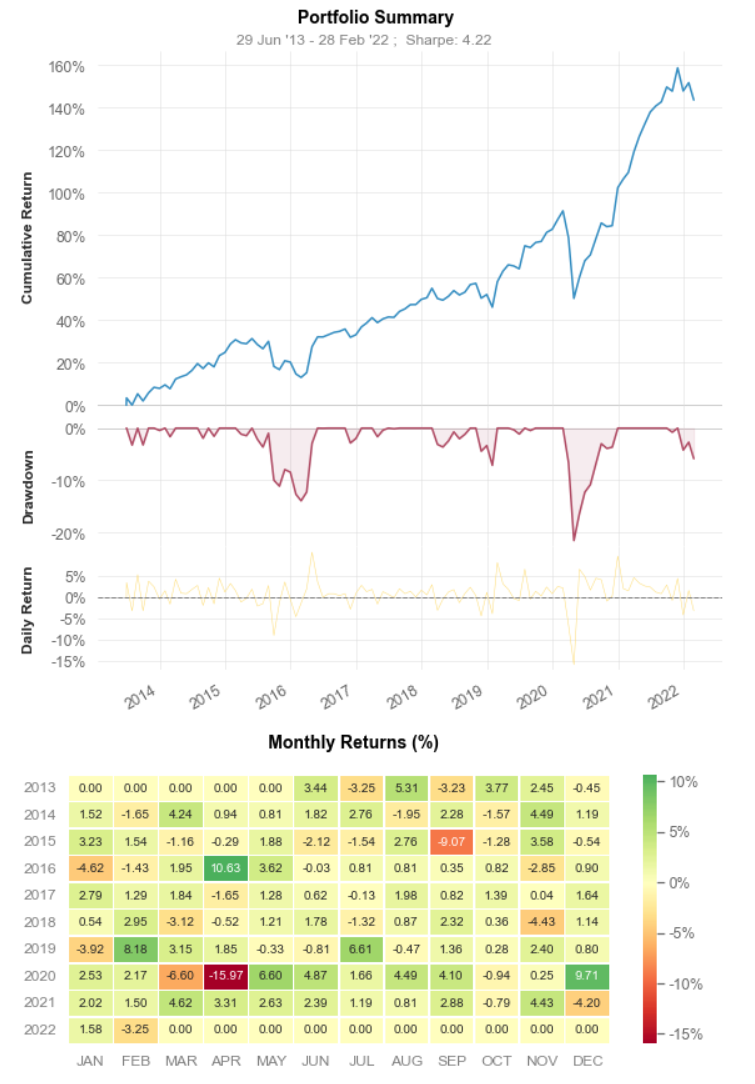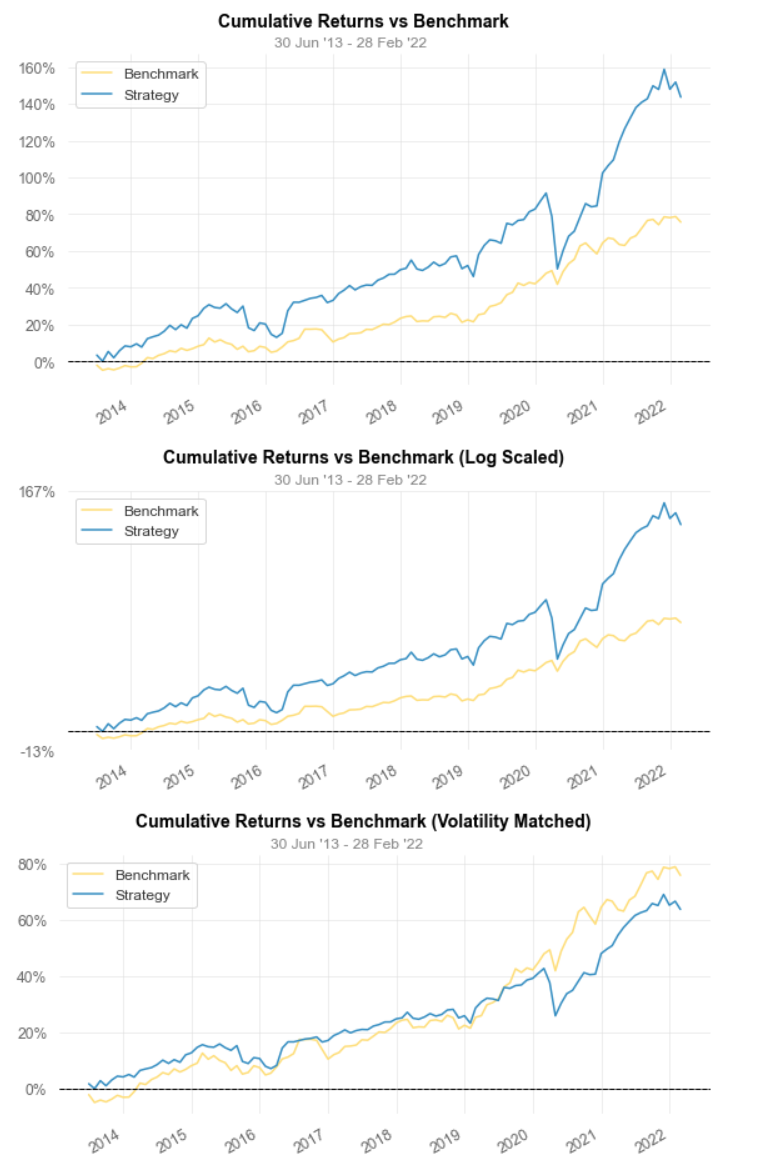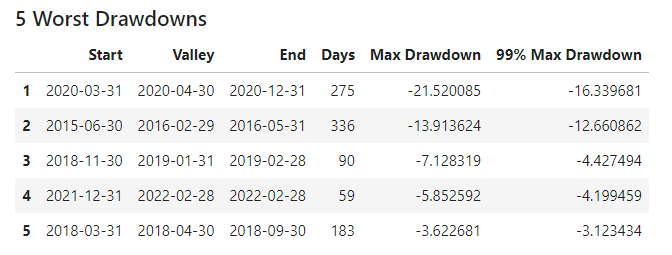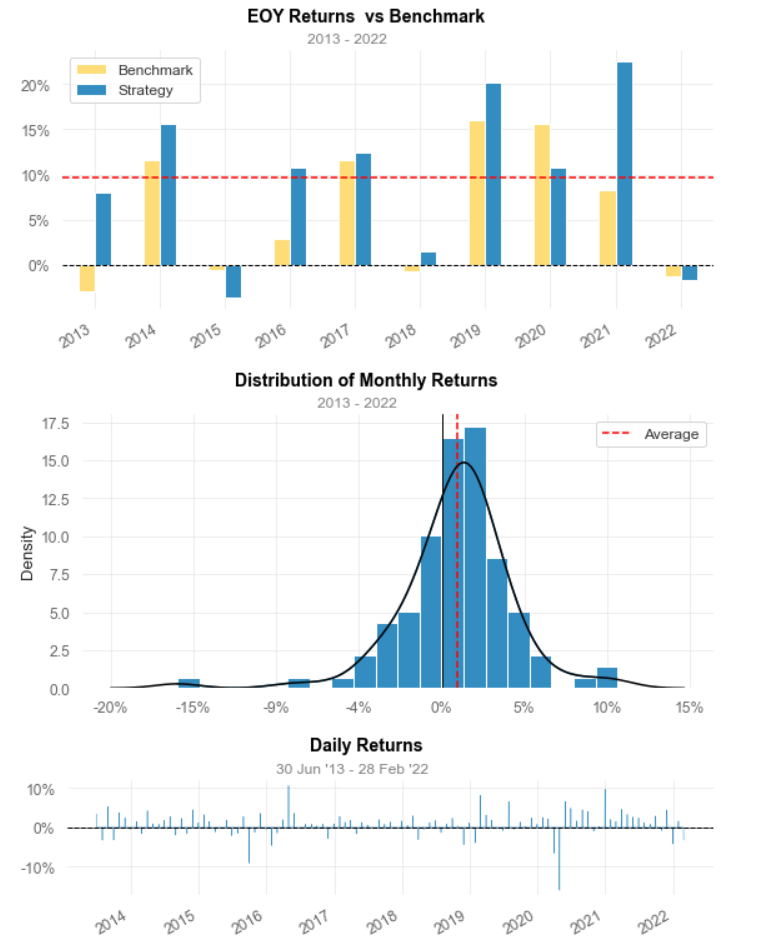This post is about application of kelly criterion to financial investors.
What is Kelly Criterion
Kelly Criterion was developed to assist AT&T with its long-distance telephone signal noise issues and published as “A New Interpretation of Information Rate” in 1956. However, this idea could be easily adopted to gambling field. This idea enabled gamblers to maximize the size of their bankroll over the long term. Today, many people use it as a general money management system for gambling as well as investing.
Applying this therom to multi asset classes portfolio is equivalent to mean-variance portfolio optimization process. Thus maximum sharpe ratio solution (which requires inverse of correlation matrix) is needed. Detailed derivation can be found in below link.
Mathematics for Kelly Criterim
Simple Math
Kelly began by analyzing games with a binary win-lose outcome. The key variables are:
- b: The odds define the amount won for a \$1 bet. Odds = 5/1 implies a \$5 gain if the bet wins, plus recovery of the \$1 capital.
- p: The probability defines the likelihood of a favorable outcome.
- f: The share of the current capital to bet.
- V: The value of the capital as a result of betting.
The Kelly rule aims to maximize the value’s growth rate, G, of infinitely-repeated bets.
$ G=\lim_{N\rightarrow\infty}=\frac{1}{N}\log\frac{V_N}{V_0} $
If we apply this formula to multiple assets, the result is equivalent to the (potentially levered) maximum Sharpe ratio portfolio from the mean-variance optimization. The computation involves the dot product of the precision matrix, which is the inverse of the covariance matrix, and the return matrix:
Data used (index)
I used index data from major index maker. All index are available in ETF(Exchange Traded Fund) form and can be traded easily.
1
2
3
4
5
6
7
8
9
10
11
12
13
14
15
16
17
18
19
20
21
22
23
IVV : iShares Core S&P 500 ETF
VEA : Vanguard FTSE Developed Markets ETF
VWO : Vanguard FTSE Emerging Markets ETF
TLT : iShares
TIP : iShares TIPS Bond ETF
LQD : iShares iBoxx $ Investment Grade Corporate Bond ETF
DBC : Invesco DB Commodity Index Tracking Fund
XAR : SPDR® S&P® Aerospace & Defense ETF
XLB : The Materials Select Sector SPDR® Fund
XLE : The Energy Select Sector SPDR® Fund
XLF : The Financial Select Sector SPDR® Fund
XLI : The Industrial Select Sector SPDR® Fund
XLK : The Technology Select Sector SPDR® Fund
XME : SPDR® S&P® Metals & Mining ETF
XLP : The Consumer Staples Select Sector SPDR® Fund
XLY : The Consumer Discretionary Select Sector SPDR® Fund
XLU : The Utilities Select Sector SPDR® Fund
XLV : The Health Care Select Sector SPDR® Fund
XPH : SPDR® S&P® Pharmaceuticals ETF
XBI : SPDR® S&P® Biotech ETF
RWR : SPDR® Dow Jones® REIT ETF
RWX : SPDR® Dow Jones® International Real Estate ETF
Benchmark for this strategy is all weather porfolio of Ray Dalio.
1
2
3
4
5
Equity: MSCI All Country 30%
Long Fixed Income : Bloomberg US 20+ Treasury 40%
Mid-Short Fixed Income : Bloomberg US 7-10 Treasury 15%
Commodity : Gold Index 7.5%
Commodity : Goldmansachs Commodity Index 7.5%
Strategy Overview
1
2
3
4
5
6
7
8
9
10
11
Strategy Benchmark
-------------------------- ---------- -----------
Start Period 2013-06-30 2013-06-30
End Period 2022-02-28 2022-02-28
Cumulative Return 143.67% 75.73%
CAGR﹪ 10.82% 6.72%
Sharpe 4.24 4.83
Expected Shortfall (cVaR) -4.7% -2.44%
Max Drawdown -21.52% -6.86%
Full Code
You can see full code in here CODE
Let’s code this idea
Kelly Criterion in multiple asset classes via python code.
1
2
3
4
5
6
7
8
9
10
11
12
13
def kelly_allocation_mp(asset_ylds):
cov = asset_ylds.cov()
# np.linalg.inv(cov) returns inverse matrix in numpy matrix type
precision_matrix = pd.DataFrame(np.linalg.inv(cov), index=asset_ylds.columns.tolist(), columns=asset_ylds.columns.tolist())
kelly_allocation = asset_ylds.mean().dot(precision_matrix)
# constraints : long position only, short signal will be map to zero
kelly_allocation[kelly_allocation < 0] = 0
# normalize target postion to 100
kelly_allocation = kelly_allocation.div(kelly_allocation.sum())
return kelly_allocation
Full Result
1
2
3
4
5
6
7
8
9
10
11
12
13
14
15
16
17
18
19
20
21
22
23
24
25
26
27
28
29
30
31
32
33
34
35
36
37
38
39
40
41
42
43
44
45
46
47
48
49
50
51
52
53
54
55
56
57
58
59
60
61
62
63
64
65
66
67
68
69
70
71
72
73
74
75
76
Strategy Benchmark
------------------------- ---------- -----------
Start Period 2013-06-30 2013-06-30
End Period 2022-02-28 2022-02-28
Risk-Free Rate 0.0% 0.0%
Time in Market 100.0% 100.0%
Cumulative Return 143.67% 75.73%
CAGR﹪ 10.82% 6.72%
Sharpe 4.24 4.83
Smart Sharpe 4.12 4.69
Sortino 6.41 8.36
Smart Sortino 6.23 8.12
Sortino/√2 4.54 5.91
Smart Sortino/√2 4.4 5.74
Omega 2.12 2.12
Max Drawdown -21.52% -6.86%
Longest DD Days 336 488
Volatility (ann.) 54.12% 28.94%
R^2 0.43 0.43
Calmar 0.5 0.98
Skew -1.08 -0.23
Kurtosis 6.02 0.23
Expected Daily % 0.85% 0.54%
Expected Monthly % 0.85% 0.54%
Expected Yearly % 9.32% 5.8%
Kelly Criterion 31.85% 30.27%
Risk of Ruin 0.0% 0.0%
Daily Value-at-Risk -4.7% -2.44%
Expected Shortfall (cVaR) -4.7% -2.44%
Gain/Pain Ratio 1.12 1.14
Gain/Pain (1M) 1.12 1.14
Payoff Ratio 0.86 1.02
Profit Factor 2.12 2.14
Common Sense Ratio 2.67 2.6
CPC Index 1.24 1.42
Tail Ratio 1.26 1.21
Outlier Win Ratio 2.85 4.46
Outlier Loss Ratio 2.34 4.41
MTD -3.25% -1.7%
3M -1.68% 0.82%
6M 1.16% 1.95%
YTD -1.73% -1.35%
1Y 17.99% 5.15%
3Y (ann.) 15.98% 12.26%
5Y (ann.) 12.15% 9.41%
10Y (ann.) 10.82% 6.72%
All-time (ann.) 10.82% 6.72%
Best Day 10.63% 4.86%
Worst Day -15.97% -4.97%
Best Month 10.63% 4.86%
Worst Month -15.97% -4.97%
Best Year 22.48% 16.01%
Worst Year -3.64% -2.96%
Avg. Drawdown -3.82% -2.24%
Avg. Drawdown Days 79 106
Recovery Factor 6.68 11.03
Ulcer Index 0.05 0.02
Serenity Index 11.85 14.34
Avg. Up Month 2.82% 1.78%
Avg. Down Month -3.29% -1.74%
Win Days % 68.57% 64.76%
Win Month % 68.57% 64.76%
Win Quarter % 72.22% 72.22%
Win Year % 80.0% 60.0%
Beta 1.23 -
Alpha 0.58 -
Strategy Evaluation
To be updated …



